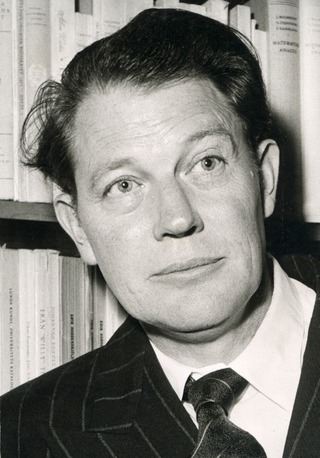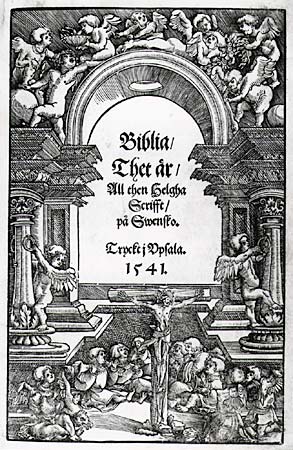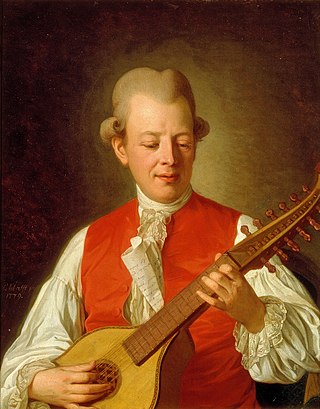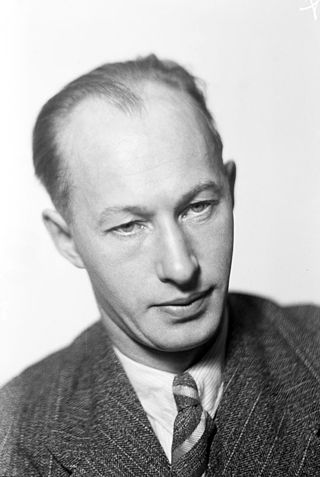
Pär Fabian Lagerkvist was a Swedish author who received the 1951 Nobel Prize in Literature.

Harry Martinson was a Swedish writer, poet and former sailor. In 1949 he was elected into the Swedish Academy. He was awarded a joint Nobel Prize in Literature in 1974 together with fellow Swede Eyvind Johnson "for writings that catch the dewdrop and reflect the cosmos". The choice was controversial, as both Martinson and Johnson were members of the academy.

Karin Maria Boye was a Swedish poet and novelist. In Sweden, she is acclaimed as a poet, but internationally, she is best known for the dystopian science fiction novel Kallocain (1940).
Swedish literature refers to literature written in the Swedish language or by writers from Sweden.

Ivar Lo-Johansson was a Swedish writer of the proletarian school. His autobiographical 1978 memoir, Pubertet (Puberty), won the Nordic Council's Literature Prize in 1979.

Moa Martinson, born Helga Maria Swarts sometimes spelt Swartz, was one of Sweden's most noted authors of proletarian literature. Her ambition was to change society with her authorship and to portray the conditions of the working class, and also the personal development of women. Her works were about motherhood, love, poverty, politics, religion, urbanization and the hard living conditions of the working-class woman.

Early Swedish literature designates Swedish literature written between approximately 1200–1500 AD.

The German Protestant Reformation had spread to Sweden by 1520, and resulted in the Swedish Reformation in 1527. The advent of the printing press facilitated a full translation of the Bible into Swedish in 1541. From a philological view, a new period in the development of the Swedish language called Modern Swedish was initiated with the Bible translation. It also gave power to the vernacular language.
Swedish realism is the period in Swedish literature that encompassed the last two decades of the 19th century. It is generally considered to have ended in the 1910s but the exact year is a matter of debate.

The Scandinavian ballad tradition is the tradition of Scandinavian poetic singer-songwriters. Within the tradition, the Swedish ballad tradition has been particularly influential, but the tradition also exists in the other Scandinavian countries. This visa tradition should not be confused with traditional "medieval" Swedish ballads, which are representative of a typical tradition of Scandinavian ballads.

The Swedish children's literature tradition was initiated by the Swedish-speaking Finn Zachris Topelius in the 19th century. It flourished at the dawn of the 20th century with Elsa Beskow (1874–1953), who wrote and illustrated some 40 children's stories between 1897–1952. Her books were beloved and have continued to be reprinted in Sweden and many other languages.
Swedish modernist poetry developed in the 1910s with authors such as Pär Lagerkvist and was established the 1930s and 1940s. Distinguishing features where experimentation within a variety of styles, usually free prose without rhymes or metric syllables.
Samfundet De Nio is a Swedish literary society founded on 14 February 1913 in Stockholm by a testamentary donation from writer Lotten von Kraemer. The society has nine members who are elected for life. Its purpose is to promote Swedish literature, peace and women's issues. It mainly presents a number of literary awards. It was started as an alternative to the Swedish Academy and is often compared to its more noted cousin.

Sven Stolpe was a Swedish writer, translator, journalist, literary scholar and critic, who was active in Swedish literary and intellectual discussion for most of his life.

Hilda Augusta Amanda Kerfstedt, née Hallström, was a Swedish novelist, playwright and translator. She was a popular and noted writer in late 19th and early 20th century Sweden, and participated in the public debate. She was also engaged in the movement for women's rights, and active in the Fredrika Bremer Association and Married Woman's Property Rights Association. As a feminist, she focused on the debate around sexual equality, and was critical to the contemporary sexual double standards for men and women. As such, she was one of the participants in the Nordic sexual morality debate, the public debate in Swedish papers, books and plays, which took place during the 1880s. Kerfstedt was a member of the women's association Nya Idun and one of its first committee members. She was the editor of the feminist paper Dagny, the publication of the Fredrika Bremer Association, in 1888–1891. She was especially noted within the debate on children's literature.
Fem unga is a Swedish anthology published in 1929 and the name of the literary group formed by the five young proletarian writers who contributed to it: Erik Asklund, Josef Kjellgren, Artur Lundkvist, Harry Martinson and Gustav Sandgren. Fem unga played a key role in introducing literary modernism in Swedish literature.

Lars Lönnroth is a Swedish literary scholar.
Fyrtiotalism ("Fortiesism") is the name of a literary movement in Swedish literature in the 1940s. The writers were not a united group, but represented a new generation of literature with a modernist tendency. Their work, influenced by writers such as Fyodor Dostoyevsky, Franz Kafka, T. S. Eliot and the events during World War II, marked the breakthrough and establishment of Modernist Swedish literature.

The 1974 Nobel Prize in Literature was awarded jointly to Swedish authors Eyvind Johnson (1900–1976) "for a narrative art, farseeing in lands and ages, in the service of freedom" and Harry Martinson (1904–1978) "for writings that catch the dewdrop and reflect the cosmos." The winners were announced in October 1974 by Karl Ragnar Gierow, permanent secretary of the Swedish Academy, and later sparked heavy criticisms from the literary world.